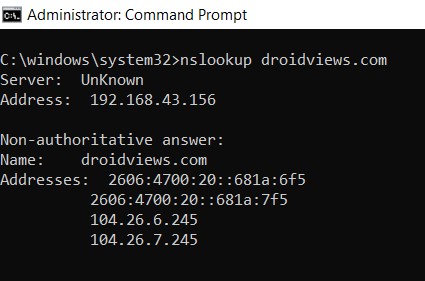Until you know the real capabilities of the Command Prompt, it might seem nothing more than a black-and-white window without any GUI. As it currently stands, it could well be regarded as among the most useful tools of the Windows ecosystem. Right from getting complete information about the connected network to turning off your PC, it can do it all. In this guide, we have compiled a list of 10 of the most useful Windows Command Prompt tricks you should be aware of. Let’s begin with the guide.
1. Shortcut to Start CMD as an Admin
Before getting ahead with all the other Windows Command Prompt tricks, it is important to get yourself acquainted with this one. Probably none of the commands will work if you haven’t opened the CMD as an Admin. One method to do so is to right-click on the CMD and select the option to Run as Administrator.
For once, that may suffice. But if you are inputting these commands very frequently, here is a better way to handle such situations. You could create a shortcut of Command Prompt that will always open as an Admin. You could even back up and restore drivers on Windows 10 using the instructions given in that guide.
To do so, here are the steps to be followed. It is indeed among the most important Windows Command Prompt tricks.
- Create a Command Prompt shortcut on your Desktop. This could be done by right-clicking Desktop > New > Shortcut > Enter cmd.exe in the box > Next > Give it a name > Finish.
- Next, right-click on that CMD icon, go to Shortcut > Advanced > Tick Run as Administrator > Click OK.
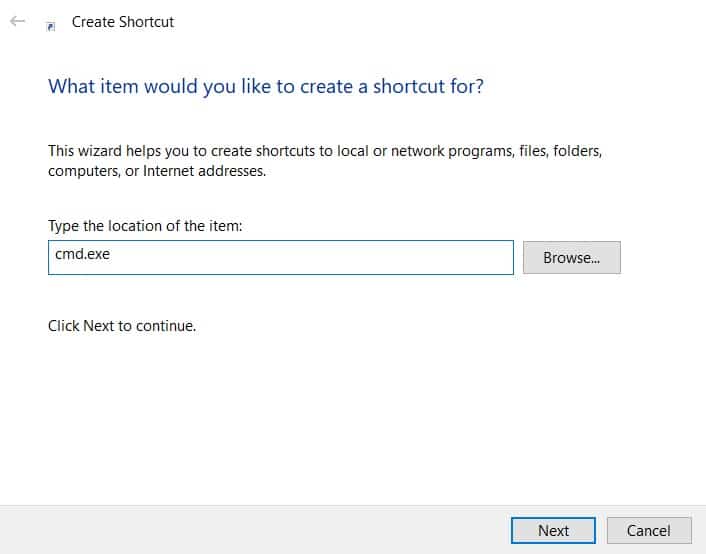
That’s it. You have now successfully created a CMD shortcut. Now you can directly execute the below commands without every time having to run it as Admin. With that said, here are some of the other useful Windows Command Prompt tricks.
2. Get Complete System Information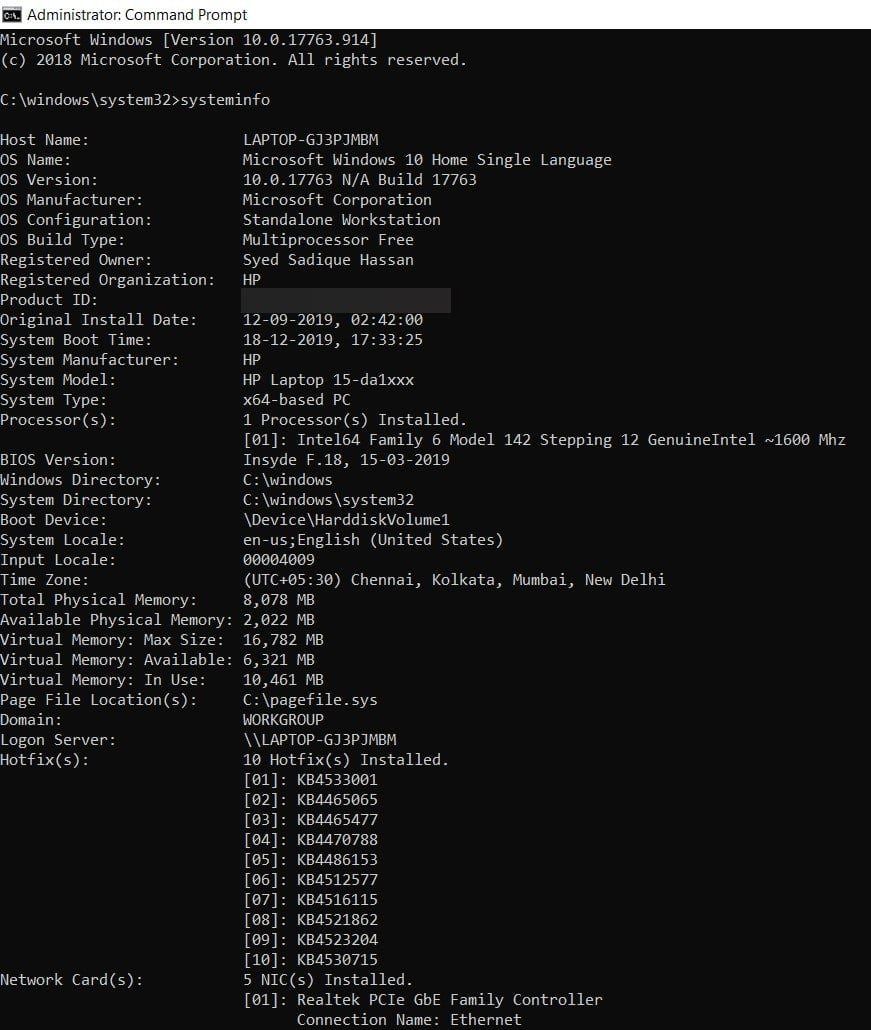
The next on the list of useful Windows Command Prompt trick could be used to get complete information about your PC. It is quite difficult to get hold of various system information. Although you might remember your laptop’s RAM and ROM, the Model Number, BIOS Number, and Network card details are something one doesn’t necessarily remember. This is where the systeminfo command will come in handy. Moreover, you can also find the Product ID, OS version, Boot Device number, and other related details.
3. Network Related Information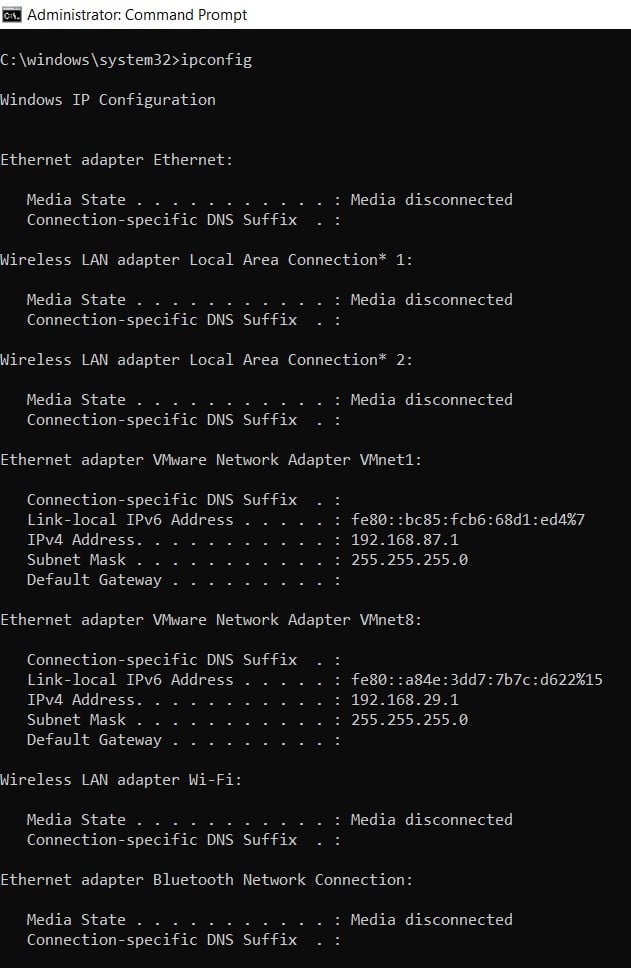
Getting network information has never been this easy. With these useful Windows Command Prompt tricks that include the ipconfig command, you can access various networking information like your current IP Address, Subnet Mask, Default gateway, IPv4 and IPv6 address, and so much more. Please refer to the guide to know more about the said topic.
4. Shutdown, Hibernate, and Restart your PC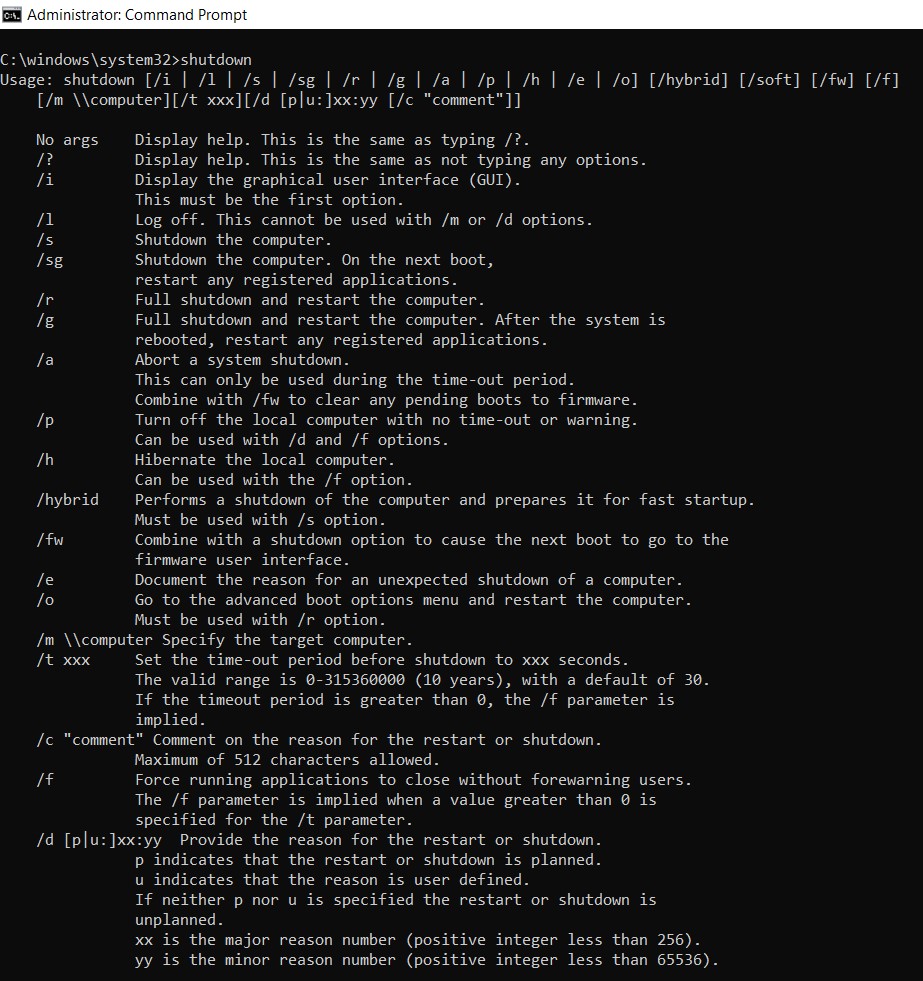
Another pretty useful addition to the list of useful Windows Command Prompt tricks, you could restart, hibernate, shut down, or perform other related functions, right from the Command window itself. Here is the list of commands and their intended functions:
- Use the shutdown command to bring about a list of all the Shutdown functionalities.
- Initiate a GUI window related to the shutdown, restart, and other such features via the shutdown /i command
- Take the help of the shutdown /s command to directly shut down your PC.
- The shutdown /r command restarts your PC.
- On the other hand, the shutdown /r /t x restarts your PC after time x seconds.
5. Find a Website’s IP Address
There exist many different methods of looking up a website’s IP Address. Most of you might probably be using Chrome or other such web browsers to do so. However, the same could be done via the Command Window itself, thanks to one of the Windows Command Prompt tricks. The syntax to do so is as follows: nslookup website. You could avoid the WWW, HTTP, and other prefixes while inputting the website address. For example, if you wish to find out the domain of our site, here is the syntax: nslookup droidviews.com. You could also set a static IP address on Windows using the instructions.
6. Check a File’s Integrity
Have you installed third-party software and are worried it might have corrupted some important files on your PC? This Windows Command Prompt trick may come in handy. Using the sfc /scannow command, you can scan those files and ensure their integrity. Furthermore, if any error is found, it repairs the concerned file by replacing it with an earlier version of that backed-up file. Here are the other three related commands to keep in mind. Do note that all these commands take some time to execute successfully.
- /verifyonly: Checks the integrity of a specific file but doesn’t repair it.
- /scanfile: As evident by its name, it scans the integrity of files.
- /verifyfile: Verify the integrity of files stored on your PC.
7. Abort a Command
Next in the list of useful Windows Command Prompt tricks is to abort an ongoing command. If a command is being executed in hundreds of lines of code. Since you have already found out the desired output in the initial phase, it makes no sense to let the command go on forever. An excellent example of that could be the dir command, which is used to display a list of files, folders, and sub-folders. If you have found the desired file, simply abort the rest of the command via the Ctrl + C shortcut.
8. Function Keys Shortcut
Unknown to many, Function Keys hold some important functionalities within themselves. Here are some functions of the F keys, part of the useful Windows Command Prompt tricks. Just press the fn key while keeping hold of the F keys. With that said, here are the important function-key-related commands:
- F1: It pastes the last executed command’s character.
- F2: It allows you to paste the last executed commands.
- F3: Pastes the last executed command entirely. This could also be done via the UP arrow key.
- F4: Allows you to delete the characters up to the said number of characters.
- F5: Another useful Windows Command Prompt trick that allows pasting recently executed commands.
- F6: It directly pastes ^Z to any input command.
- F7: Shows a list of previously executed commands
- F8: Pastes recently executed commands.
- F9: A dialog box pops up asking the number of commands you wish to paste from the F7 list.
9. Run Multiple Commands
If you wish to execute two or more commands at once, you could do so via the && symbol. Simply enter the first command followed by && and the second command, and make the most of this Windows Command Prompt trick. For example, to check for a site’s IP Address and at the same time look out for your network details, enter nslook droidviews.com && ipconfig.
10. Drag and Drop Command Prompt Trick
The last one in the list of Windows Command Prompt tricks is a nifty drag-and-drop functionality. Some commands ask for entering the desired file’s full pathname. And it is an extremely tedious job to do. This is where the drag-and-drop functionality might come in handy. Rather than manually entering the associated file’s full path, simply drag it over to the Command Prompt. It’s a great time-saver command.
With that, we conclude the guide on the most useful Windows Commands. Do let us know which one of those stood out as your favorite.
Read next: Disable Automatic Driver Updates on Windows 10
